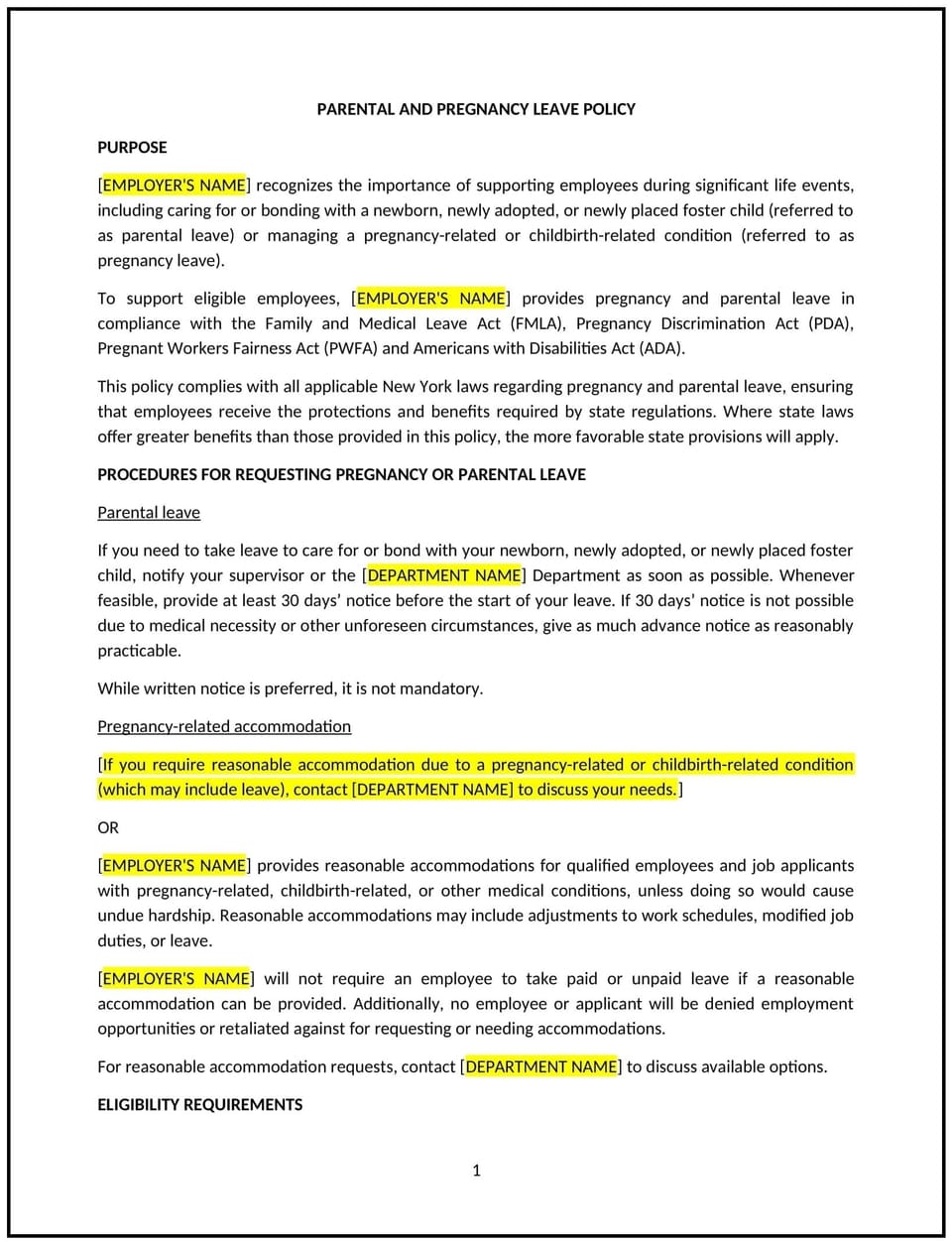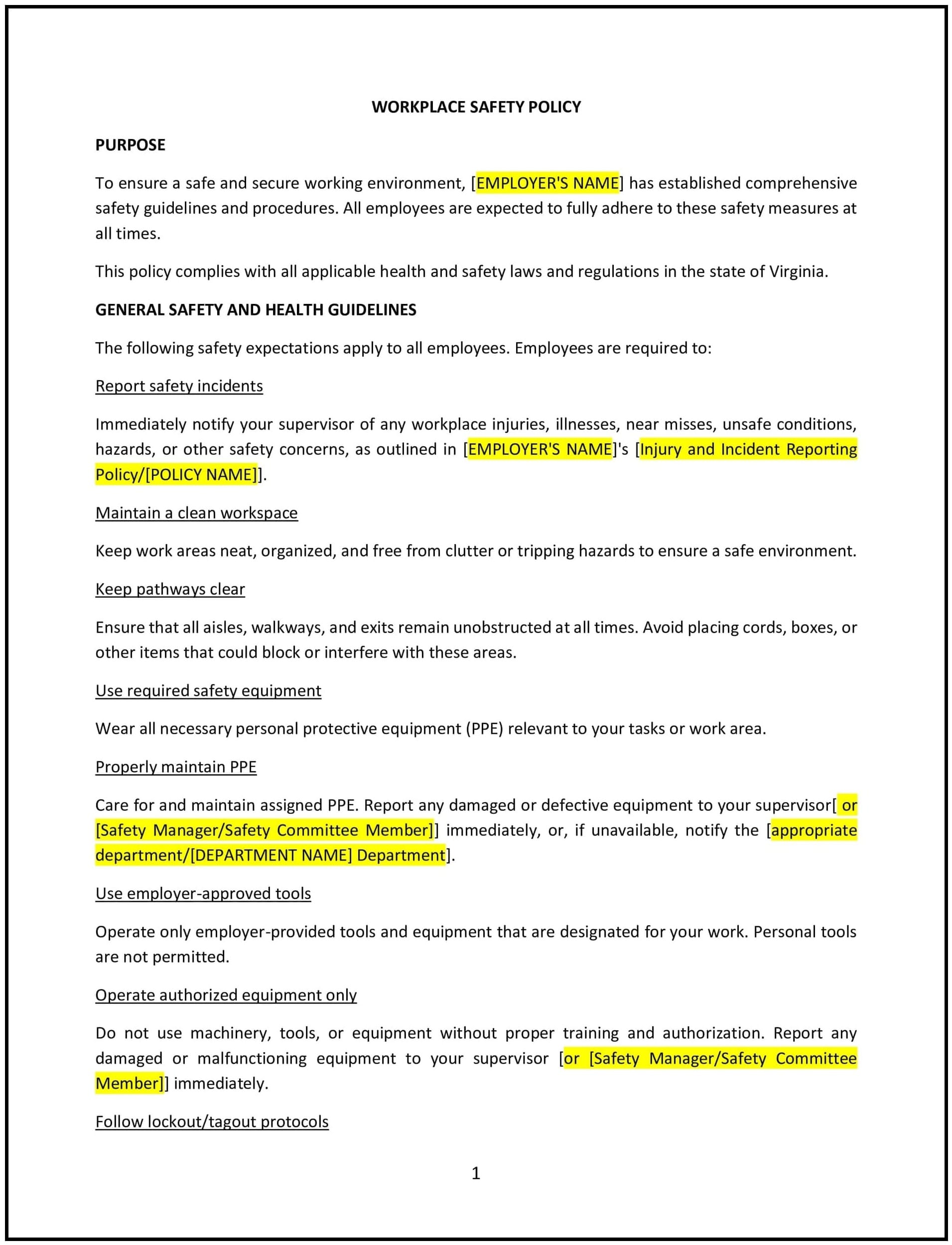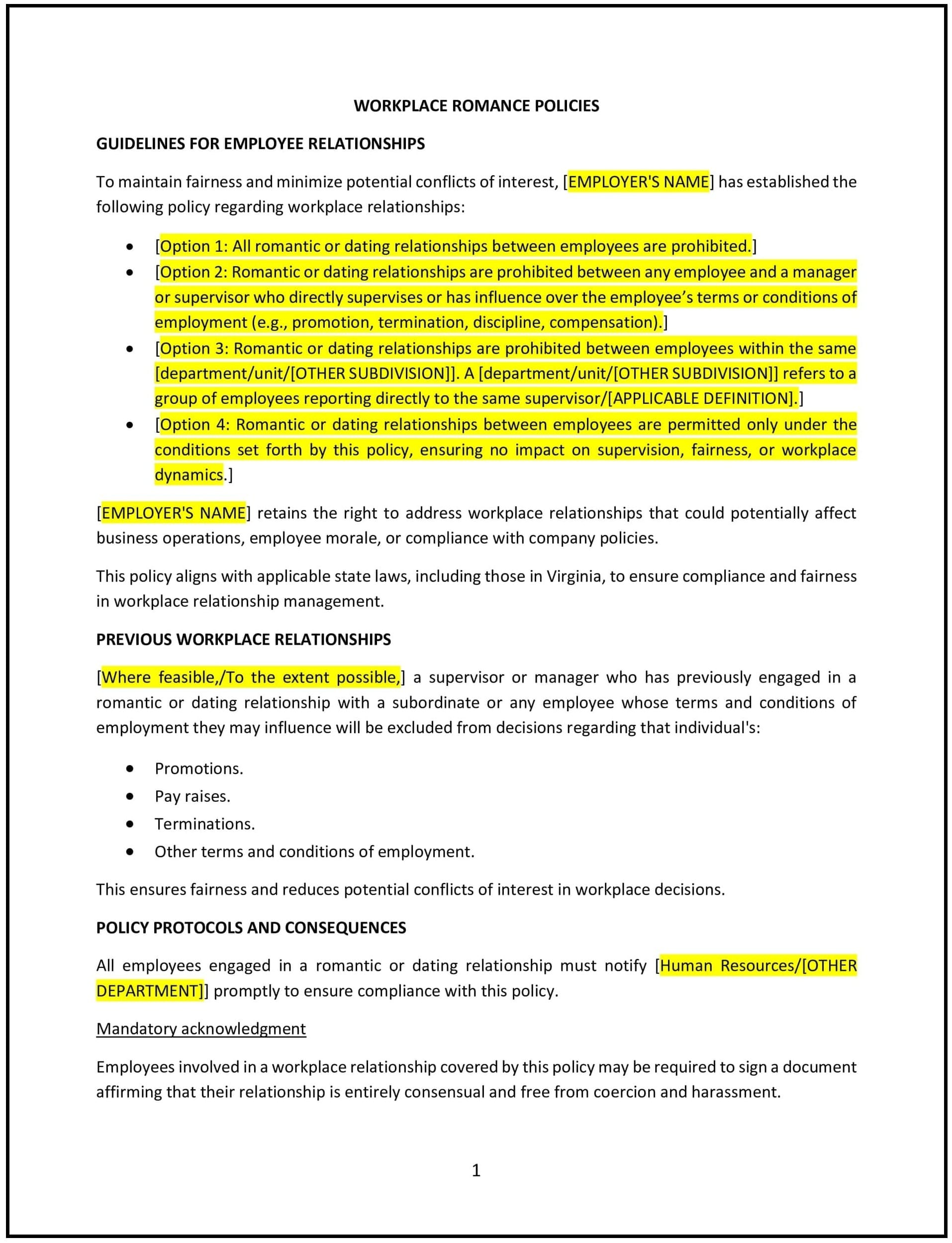Parental and pregnancy leave policy (New York): Free template

Parental and pregnancy leave policy (New York)
This parental and pregnancy leave policy is designed to help New York businesses outline guidelines for employees who require leave for pregnancy, childbirth, or bonding with a new child. Whether businesses are navigating leave requests, maintaining operational continuity, or addressing legal requirements, this template provides a structured approach to managing parental and pregnancy leave.
By adopting this template, businesses can support employees’ needs, foster a family-friendly culture, and clarify expectations for all parties.
How to use this parental and pregnancy leave policy (New York)
- Define eligibility: Clearly state which employees are eligible for leave, including criteria such as length of employment and work hours, in alignment with applicable laws.
- Specify leave types: Outline the types of leave covered, such as pregnancy-related medical leave, bonding leave, or adoption leave, and the duration allowed.
- Provide notice requirements: Detail the steps employees must take to request leave, including timelines, required documentation, and points of contact.
- Address benefits continuation: Clarify how benefits such as health insurance will be maintained during leave, along with any cost-sharing responsibilities.
- Include return-to-work guidelines: Describe the process for employees returning from leave, such as providing medical clearance or discussing scheduling adjustments.
Benefits of using a parental and pregnancy leave policy (New York)
This policy offers several benefits for New York businesses:
- Supports employee well-being: Offering clear guidelines helps employees manage leave without unnecessary stress or uncertainty.
- Promotes workplace fairness: Transparent policies ensure all employees are treated equitably when requesting leave.
- Reduces disruptions: A structured process allows businesses to plan for coverage during employee absences.
- Improves retention: Supporting employees during life events such as childbirth or adoption fosters loyalty and job satisfaction.
- Demonstrates a family-friendly culture: A proactive approach to parental leave enhances the business’s reputation as an inclusive and supportive employer.
Tips for using this parental and pregnancy leave policy (New York)
- Communicate clearly: Include the policy in employee handbooks and review it during onboarding to ensure employees understand their rights and responsibilities.
- Plan for coverage: Develop contingency plans to manage workloads and maintain business operations during employee absences.
- Support returning employees: Offer flexibility for employees transitioning back to work, such as adjusted schedules or remote work options where feasible.
- Regularly review laws: Stay informed of updates to New York state and federal regulations regarding parental and pregnancy leave to keep the policy current.
- Provide resources: Offer employees access to additional resources, such as counseling services or support groups, to aid in their transition.
Q: What types of leave are included under this policy?
A: This policy typically covers pregnancy-related medical leave, bonding leave for new parents, and adoption leave, with specific durations outlined based on applicable laws and business practices.
Q: Is parental leave paid or unpaid in New York?
A: Parental leave may be paid or unpaid depending on the type of leave and the employee’s eligibility for benefits such as New York Paid Family Leave (PFL).
Q: How should employees request leave?
A: Employees should submit a written request for leave along with any required documentation, such as medical certifications or adoption paperwork, within the specified timeframe.
Q: Are benefits maintained during leave?
A: Employees may retain health insurance and other benefits during leave, with cost-sharing arrangements based on the business’s policy and legal requirements.
Q: How often should this policy be reviewed?
A: The policy should be reviewed annually or when changes occur in state or federal leave regulations or workplace practices.
This article contains general legal information and does not contain legal advice. Cobrief is not a law firm or a substitute for an attorney or law firm. The law is complex and changes often. For legal advice, please ask a lawyer.


